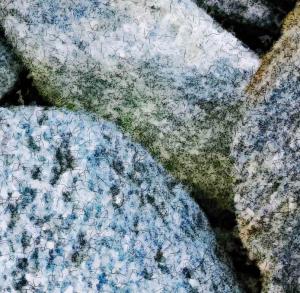Sale on canvas prints! Use code ABCXYZ at checkout for a special discount!

Over the last few years I've been experimenting with a program called Studio Artist, a digital paint synthesizer, using it to digitally paint my photos, virtual and otherwise. At first I really didn't know what I wanted to do with it. Did I want to make photos that looked like paintings? Or create paintings that look like photos?
Thanks to some recent inspiration from scientist Russell Kirsch however, I found out what I was trying to achieve and how to achieve it.
In an article, Russell Kirsch had said he had made a mistake. Mr. Kirsch is a scientist with the National Bureau of Standards and is credited with creating the first digital image, and considered the father of digital imaging. Now he says, he made a mistake in making pixels square and he'd like to make them more flexible. This way they may better fit the image.
It suddenly dawned on me, that what he is really trying to do is to imitate some of the characteristics of film grain. Film grain, IMO, WAS one of the more important factors in the apparent sharpness of an image.
Then it also occurred to me that my graphic interpretations of my photos done with the Studio Artist paint program not only let me create a higher resolution image, it also had the appearance of film grain at a certain distance. This resulted from the pattern of dots that are created by overlaying of several layers of rendered paint strokes. These strokes range from several pixels wide to maybe 10 or 20 pixels long and several may represent one pixel from the original image. The resulting dot patterns from blending are approximately the size grain would be in a photographic image. By carefully selecting and tweaking about four different paint algorithms I have found a process of up scaling my photos and enhancing them and thereby creating a sharper appearing image than the original.
In effect, "micro-painting" as I originally dubbed it, is painting at the grain level. I have begun rendering my entire library using this method at a resolution of 10,000 pixels in the long dimension. This resolution provides exceptional results on prints up to 6' x 4'. My personal recommendation is to have it printed on canvas or a watercolor paper for an exquisitely rich print.